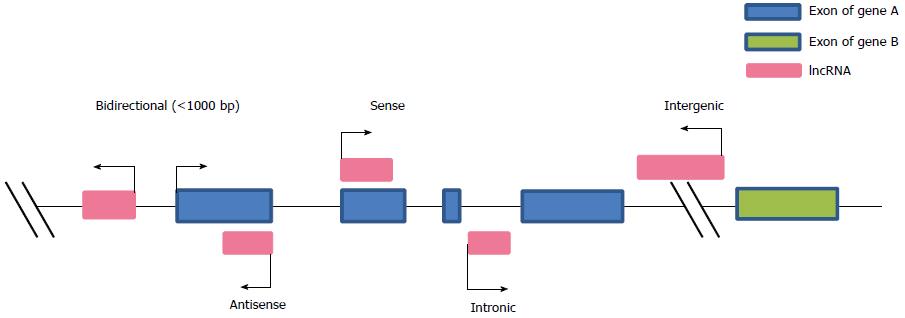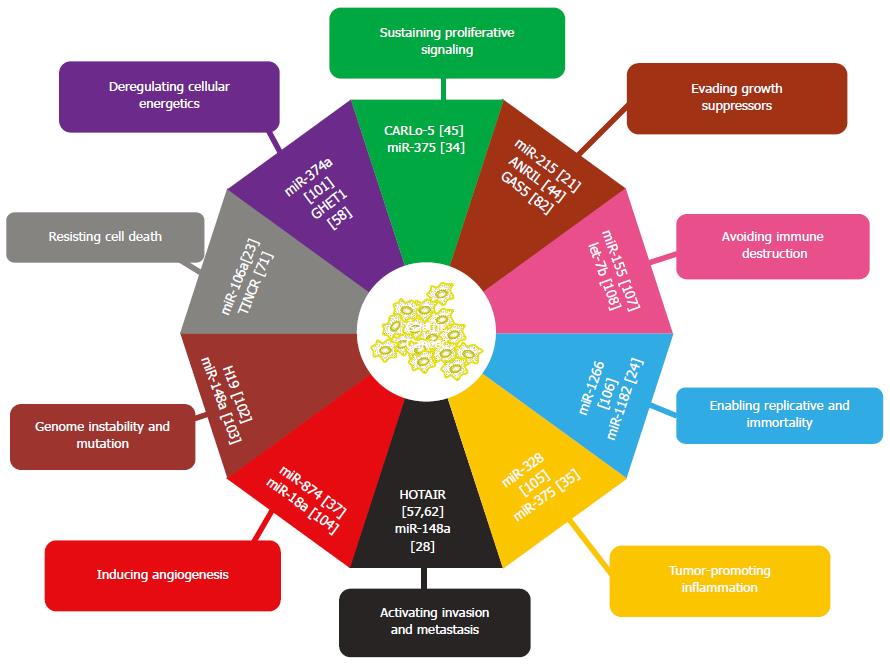Copyright
©The Author(s) 2016.
World J Gastroenterol. Jan 21, 2016; 22(3): 1213-1223
Published online Jan 21, 2016. doi: 10.3748/wjg.v22.i3.1213
Published online Jan 21, 2016. doi: 10.3748/wjg.v22.i3.1213
Figure 1 miRNAs biogenesis.
Primary miRNA) (pri-miRNA) is transcribed by RNA polymerase II from miRNA genes. The long pri-miRNA is processed by the RNase III proteins Drosha and Pasha/DGCR8 into precursor miRNA (pre-miRNA) in the nucleus. The cleaved pre-miRNA is then exported to the cytoplasm by Exportin 5 and cleaved into about 18-22 nt miRNA duplex by the RNase III Dicer. Only one strand of the miRNA duplex becomes mature and incorporates into the RNA-induced silencing complex (RISC), whereas the other strand is degraded. miRNA regulates gene expression by forming base pairs mainly with the 3’-untranslated region of its target mRNAs. The imperfect and perfect base matching between miRNA and its target mRNAs leads to inhibition of mRNA translation and induction of mRNA degradation, respectively.
Figure 2 Categories of lncRNAs.
lncRNAs are usually classified into five categories: (1) sense; or (2) antisense, when overlapping one or more exons of another transcript on the same, or opposite strand; (3) bidirectional, when the expression of lncRNA and a neighboring coding transcript on the opposite strand is initiated in close genomic proximity; (4) intronic, when lncRNA is derived wholly from within an intron; and (5) intergenic, when lncRNA lies within the genomic interval between two genes.
Figure 3 Functions of lncRNAs.
Individual lncRNA transcription occurs at a specific time and place to integrate developmental cues, interpret cellular context, or respond to diverse stimuli. A number of lncRNAs bind to and titrate away transcription factors to activate or suppress gene expression (1, 2); some lncRNAs guide site-specific recruitment of chromatin-modifying complexes to genomic sites to induce epigenetic changes and regulate gene expression (3); several lncRNAs serve as scaffolds for chromatin-modifying complexes (4); some lncRNAs specifically interact with complementary mRNAs that modulate various processes of post-transcription, such as splicing, translation and degradation (5-7). A number of lncRNAs are able to alter protein localization, regulate protein activity, or act as components of protein complex (8-10). Some lncRNAs appear to generate small RNA precursors or function as miRNA sponges (11, 12).
- Citation: Xie SS, Jin J, Xu X, Zhuo W, Zhou TH. Emerging roles of non-coding RNAs in gastric cancer: Pathogenesis and clinical implications. World J Gastroenterol 2016; 22(3): 1213-1223
- URL: https://www.wjgnet.com/1007-9327/full/v22/i3/1213.htm
- DOI: https://dx.doi.org/10.3748/wjg.v22.i3.1213












